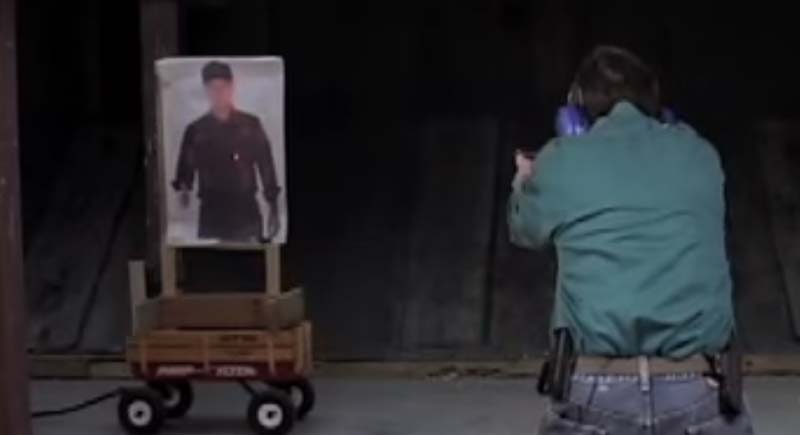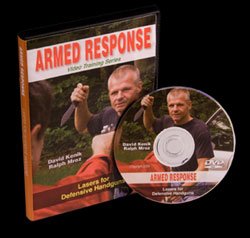
The use of lasers in law enforcement is a point of controversy with many instructors and policymakers. While there are some rational arguments made against the use of a laser, there are many very good arguments that can be made for the use of a laser sighting device.
If you are considering adding a laser to your pistol, I suggest you take a look at Lasers for Defensive Handguns, a training video featuring Ralph Mroz from the Armed Response video training series.
Ralph Mroz Video
Lasers for Defensive Handguns is a practical training video in which Mroz, a veteran firearms instructor, tackles the topic of using a laser aiming device on your handgun.

Mroz is a former law enforcement officer who has been involved in training and writing for many years. Mroz is also a former training director of the Police Officers Safety Association where he developed many video training programs for police officers.
In Lasers for Defensive Handguns, Mroz takes a reasoned, practical approach to the topic. Mroz does not avoid the arguments against lasers, rather he takes the objections head-on. For each objection, he offers his reasoned opinion on the argument without injecting spurious logic.
Mroz discusses the different types of lasers available (such as those from Crimson Trace, LaserMax and others) and offers the pros and cons of each type. Mroz anticipates possible problems with each design and offers suggestions on working with that design.
Mroz goes through a series of range drills and shows how the laser can really be of benefit, especially when shooting from imperfect positions. For example, when shooting from retention or when wounded, you may not be able to align the sights with your eyes. From these positions, your laser can still establish a good aim for your handgun.
Likewise, Mroz demonstrates shooting around cover with a laser. The demonstration clearly shows that there are times when the laser allows you to put rounds on target while exposing less of your head and body than with traditional aiming.
Lasers for Defensive Handguns was created for the armed citizen, but much of the information is directly applicable to the patrol officer. I’ve talked about a number of tips & tricks for firearms training – many of which come from the non-police world.
One law enforcement-specific argument I have heard against the use of laser aiming devices on duty guns is the laser is indistinguishable from the lasers emitted from Tasers. The fear is that the officer could mix-up aiming devices and inadvertently use deadly force when none is justified.
I call BS on that one, as an officer should only shoot a suspect if it is reasonable for him or her to use deadly force. The presence of a laser from a Taser on the suspect will not suddenly cause the officer with the pistol to use deadly force because he was confused about aiming devices.
Mroz addresses multiple lasers on a suspect in the video. Though he was not talking directly to police officers, his advice seems to apply just the same. If you and your partner both have a laser on the suspect and you are forced to shoot, does it really matter which laser is yours as long as both are on the suspect?
The Video Series
Lasers for Defensive Handguns is but one video in the Armed Response video training series. There are currently ten videos in the series, with three more in production right now.
Armed Response video program topics include fundamentals, tactics, drills, shoot/no-shot scenarios, use of tactical flashlights and less lethal tools like pepper spray.
All of the videos in the series come on DVD. Training tips and previews of the different DVDs are available on the Armed Response website.
Final Thoughts
Mroz does an excellent job of breaking down the topic and giving you a thorough understanding of laser aiming devices. The video is an excellent primer on the topic and gives you the drills you need to build skill with whatever laser aiming device you might choose.
If you are interested in learning more about adding a laser to a firearm, I definitely recommend this video for your training library.